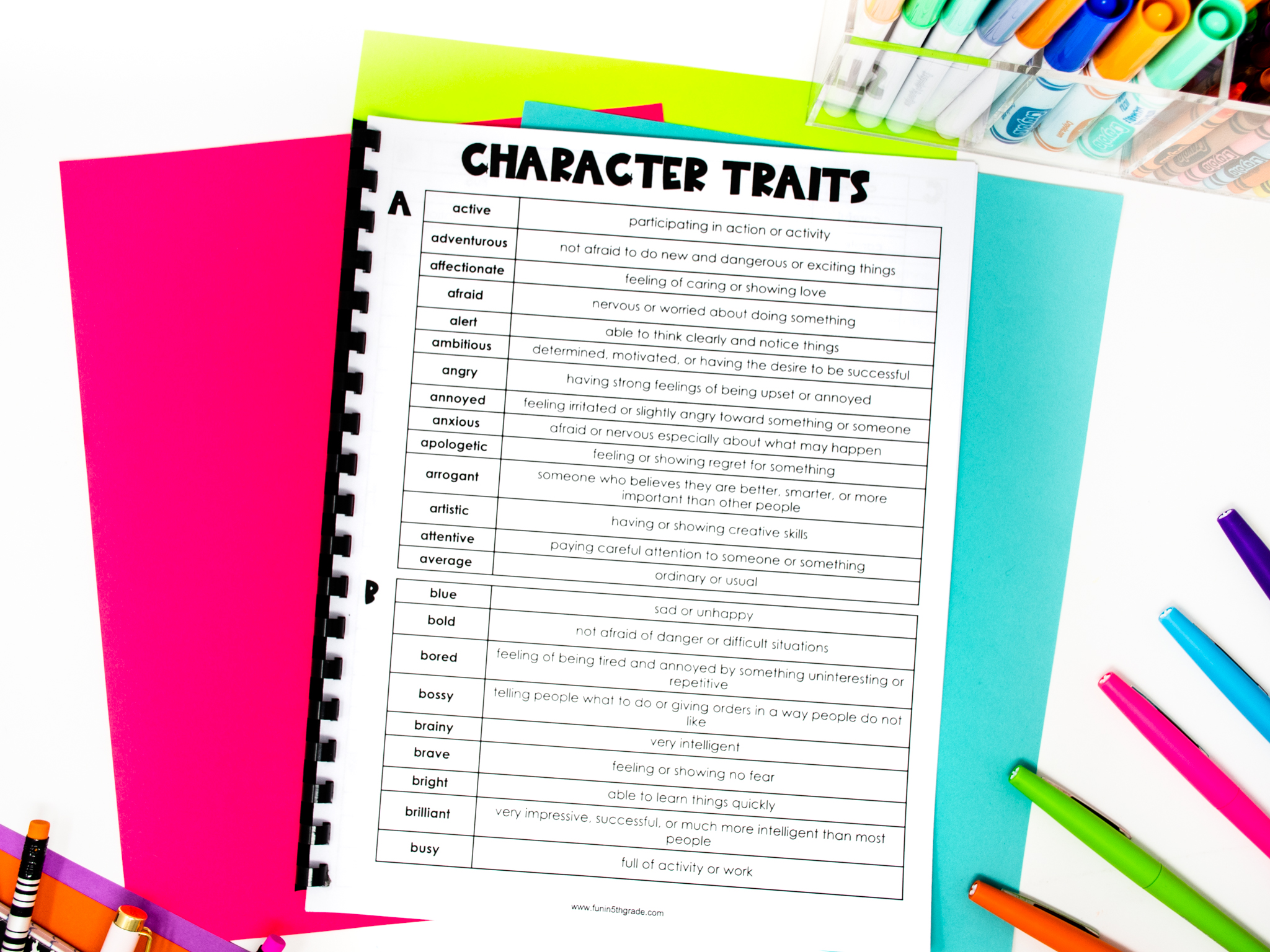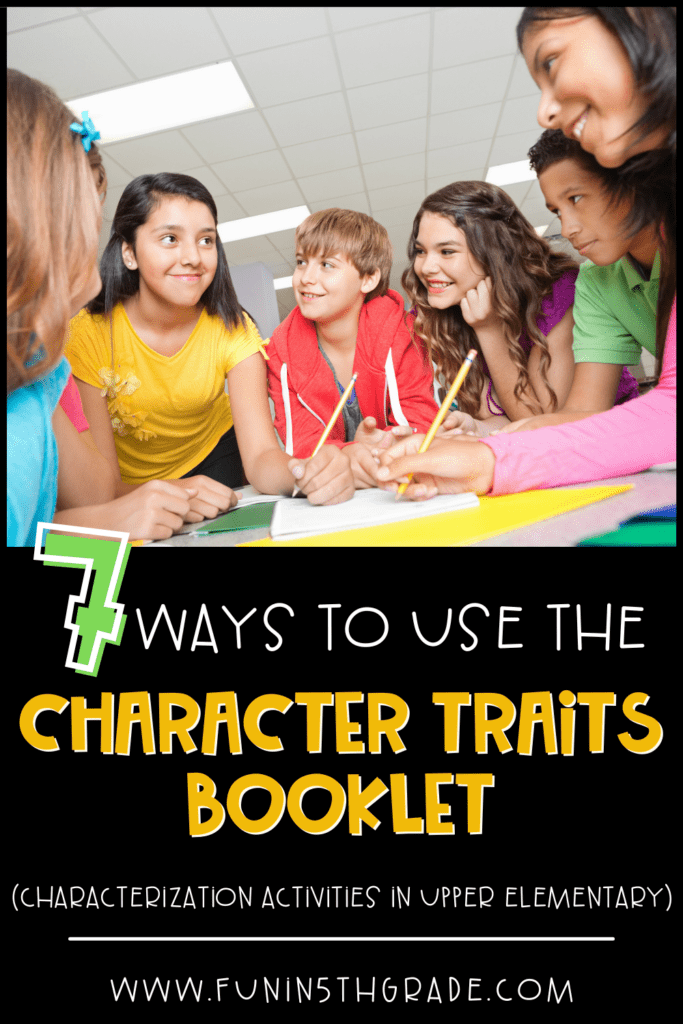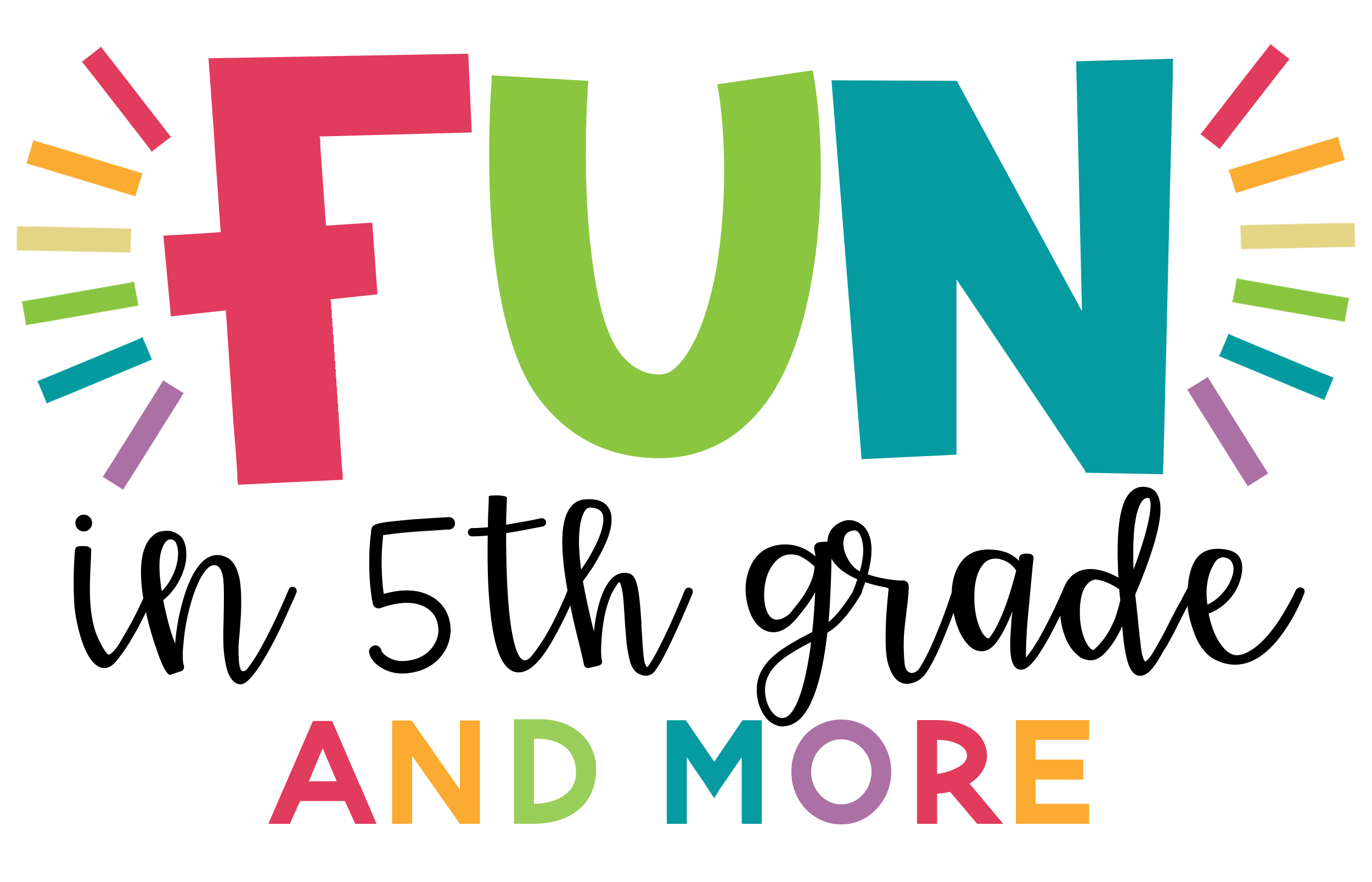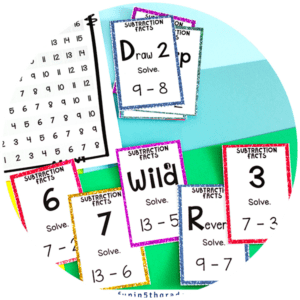Explore a variety of characterization activities in upper elementary with this Character Traits Booklet.
Studying characterization in upper elementary can be a lot of fun and result in some incredibly interesting conversations.
In my experience, getting students interested in characterization is all about applying the characterization activities to the students themselves. Characterization is, after all, an exploration of how we talk and act and what that says about both the characters we are working with and ourselves.
Don’t worry! Characterization activities in upper elementary don’t have to be one-and-done moments or even overly structured; in fact, I prefer to do simple activities spread out over time.

Today, I’m going to give you 7 ideas on how you might use our Character Traits Booklet with your classes to conduct characterization activities in upper elementary.
#1 | Individual Student Reference Books
To begin, make the Character Traits Booklets more accessible for your students by printing them into smaller books and handing them out for students to use as a reference throughout the year. Especially if you plan to do any of the other activities on this list or even using other characterization activities such as the Character Trait Game Show, having a smaller reference for each student to carry around with them will be helpful!

#2 | Character Drawing Activity
For this activity, start by printing off a copy of the Character Traits Booklet and cutting out the individual lines so that each strip of paper has one trait and one explanation on it. Then print off a simple body form that students can use to create a character. Once each student has a sheet of paper with the body and one or two different character trait slips, they will create a drawn character that represents those character traits. For example, if one of their traits is ‘imaginative’, they may draw a thought bubble above the character’s head with an idea lightbulb or put the character in a shirt with a clever saying.
Turn this same idea into a multi-media project by having students research and print off inspiration for their character traits to build out a poster with their character in a scene.
#3 | Character Trait Gallery Walk
Pick a few character traits that you want students to consider. Write the character trait and description on top of some chart paper and post the charts around the room. Split students into groups and give each group a different colored pad of sticky notes.
As students move from one poster to another, they will consider how that character trait may be described in a book. For example, if the character trait is ‘loyal,’ the students may use examples such as ‘holding someone’s hand when they are going through something hard’, or ‘still talking to someone even if it’s not the cool thing to do.’ The best way to consider this is to encourage students to think about these questions.
- When have you seen an example of ‘insert trait here’?
- If someone is being ‘insert trait,’ what are they doing?
- What kind of things might this person say in that situation?
Students can then use their answers to these questions on their sticky notes.

#4 | Character Sort Activity
For this activity, students will do the same activity as in the gallery walk, except that they will be putting the names of characters on their sticky notes instead. Students can pick characters from video games, movies, books, etc. Then after they have traveled around to each station where you have displayed a character trait from the Character Traits Booklet, students can explain why they chose the characters they did for each trait.
Time-Saving Variation: if you don’t have enough class time to talk about the choices students made after, use a video-based platform like Flipgrid to have students document their choices at each station.
#5 | Matching Centers
This one is all about taking characterization activities in upper elementary back to the basics.
To set up the center, simply cut out several of the character traits from the Character Traits Booklet into strips and disconnect the explanations and the traits. Then mix them up and have students lay them out and match them up as part of a center activity during your ELA time. You can pick 10-15 traits each time, so you’ll be able to do this activity several times throughout the year.
#6 | Year-Long Bulletin Board
At the beginning of the year, set up a bulletin board or a space in your classroom specifically to be used for character trait focus.
Each week, pick a character trait from the Character Traits Booklet, review it as a class, and put it on a poster in the middle of the board. Throughout the week, encourage students to put examples (from their own lives) of when they saw that character trait in play. Was it through actions? Words that were said? Looks that were given? At the end of the week, pick out some of your favorite examples and talk through them.
#7 | Dinner Party Interactions
This activity is for your more active and theatrical students.
Start by cutting out some of your favorite character traits from the booklet. Hand out one character trait to each student, and ask them to take a few minutes to jot down some ideas about what that trait looks like when put into action.
From there, students will be asked to act out/improvise a dinner party situation. Students will move about the space and talk to each other like they are at a dinner party, but the whole time they have to keep their character trait in mind and make sure that they are displaying that traits throughout the party.
Variation: If you want to take this one step further, have a couple of students not participate in the dinner party. Instead, their job is to go around and try to identify the character traits being performed by the others in the class.
Working on and playing around with characterization activities in upper elementary can be a lot of fun. Using the ideas on this list, you can get your students moving around or even working quietly to reinforce their characterization work during centers.
Using the Character Traits Booklet you are getting a good foundational resource that can be used over and over in different activities and projects.
How do you use the Character Traits Booklet? We’d love to add some ideas to our list, so if you’ve used the booklet to do a characterization activity with your upper elementary students that has been really successful, leave us a comment or send us an email and we’ll add it to our list!
To get a closer look into how I introduce character traits with my students, be sure to check out Introducing Character Traits in 5 Days!





